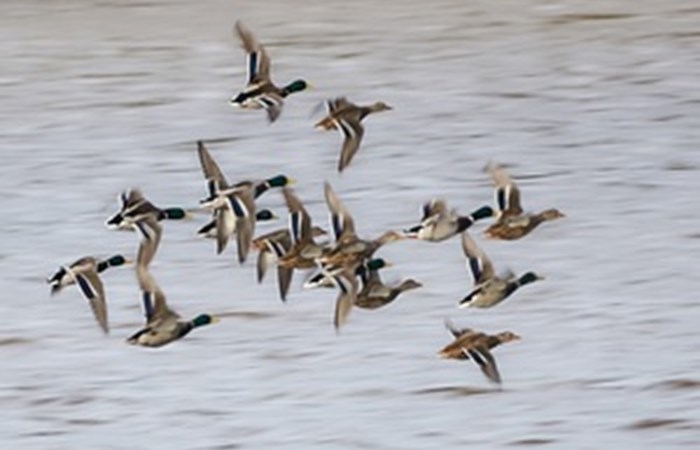Animal Plant Health Agency

Contents:
- Latest situation
- Bird flu guidance
- Risk levels
- Bird flu webinars
- Free-range and organic status
- Defra policies and contingency plans
- Bird flu legislation
Latest situation
There have been 96 confirmed cases of highly pathogenic avian influenza (HPAI) H5N1 in England since 1 October 2022.
There have been 230 cases of(HPAI)H5N1 in England since the H5N1 outbreak started in October 2021.
Check if you are in a bird flu disease zone on the map.
If youre in a bird flu disease zone you must follow the rules for that zone.
Update 6 November
Highly pathogenic avian influenza (HPAI) H5N1 was confirmed in commercial poultry on 6 November 2022:
- second premises near Fakenham, North Norfolk, Norfolk
- premises near Reepham, Broadland, Norfolk
A 3km protection zone and 10km surveillance zone are in place around each of the premises. All poultry on the premises will be humanely culled.
Highly pathogenic avian influenza (HPAI) H5N1 was also confirmed in non-commercial other captive birds at a premises near Metheringham, North Kesteven, Lincolnshire. A 3km Captive Bird (Monitoring) Controlled Zone is in place around the premises. All birds on the premises will be humanely culled.
Update 5 November
Highly pathogenic avian influenza (HPAI) H5N1 was confirmed in commercial poultry on 5 November 2022 at an eleventh premises near Dereham, Breckland, Norfolk. A 3km protection zone and 10km surveillance zone are in place around the premises. All poultry on the premises will be humanely culled.
Update 4 November
Highly pathogenic avian influenza (HPAI) H5N1 was confirmed in commercial poultry on 4 November 2022 at a second premises near Kirkham, Fylde, Lancashire. A 3km protection zone and 10km surveillance zone are in place around the premises. All poultry on the premises will be humanely culled
Highly pathogenic avian influenza (HPAI) H5N1 was confirmed in poultry at a premises near Holt, North Norfolk, Norfolk on 3 September 2022. Following successful completion of disease control activities and surveillance in the zone, the protection zone has ended and the area that formed that protection zone becomes part of the surveillance zone.
Highly pathogenic avian influenza (HPAI) H5N1 was confirmed in captive wild birds (non-poultry) on 29 August 2022 at a premises near Paignton, Torbay, Devon. Following successful completion of disease control activities and surveillance within the zone, the 3km Captive Bird (Monitoring) Controlled Zone has been revoked.
Update 3 November
Highly pathogenic avian influenza (HPAI) H5N1 was confirmed in commercial poultry on 3 November 2022 at a:
- fifteenth premises near Attleborough, Breckland, Norfolk
- second premises near Halesworth, East Suffolk, Suffolk
A 3km protection zone and 10km surveillance zone are in place around each of the premises. All poultry on the premises will be humanely culled.
Highly pathogenic avian influenza (HPAI) H5N1 was also confirmed in non-commercial other captive birds at a premises near Lancaster, Lancashire. A 3km Captive Bird (Monitoring) Controlled Zone is in place around the premises. All birds on the premises will be humanely culled.
Update 2 November
Mandatory housing measures for all poultry and captive birds are to be introduced to all areas of England from 00:01 on Monday 7 November.
The housing measures legally require all bird keepers to keep their birds indoors and to follow stringent biosecurity measures to help protect their flocks from the disease, regardless of type or size.
This will extend the mandatory housing measures already in force in the hot spot area of Suffolk, Norfolk and parts of Essex to the whole of England, following an increase in the national risk of bird flu in wild birds to very high.
Find details of the measures that will apply in the new England wide zone from 00.01 on Monday 7 November:Avian Influenza Prevention Zone (AIPZ) declaration including housing measures (England).
All bird flu cases and disease zones
Find details of all bird flu cases and disease zones in England.
Find details of bird flu cases in Scotland, cases in Wales and cases in Northern Ireland.
Bird flu guidance
Find out how to:
Find guidance about bird flu vaccination.
Risk levels
The risk of of highly pathogenic (HPAI) avian influenza H5 in wild birds in Great Britain is assessed as very high (the event occurs almost certainly).
The risk of poultry exposure to HPAI H5 in Great Britain is assessed as high (event occurs very often) (with low uncertainty) where there are substantial biosecurity breaches and poor biosecurity and medium (that is event occurs regularly) (with high uncertainty) where good biosecurity is applied.
Find details of the evidence that supported these decisions in the risk and outbreak assessments.
The UK Health Security Agency (UKHSA) advise that bird flu is primarily a disease of birds and the risk to the general publics health is very low.
The Food Standards Agency (FSA) has said bird flu poses a very low food safety risk for UK consumers. Properly cooked poultry and poultry products, including eggs, are safe to eat.
Bird flu webinars
Whether you have pet birds, commercial flocks or just a few birds in a backyard flock, the avian influenza stop the spread webinars explain what you can do to protect your birds.
Free-range and organic status
Eggs
If youre in a bird flu disease zone with housing measures, you can keep your free-range status if housing measures do not last for more than 16 weeks.
Birds will regain their free-range status when they:
- can go back outside again
- meet the standards in paragraph 1 for the protection of laying hens
If housing measures last for more than 16 weeks, contact your responsible sector body or organic certification body if you ha
